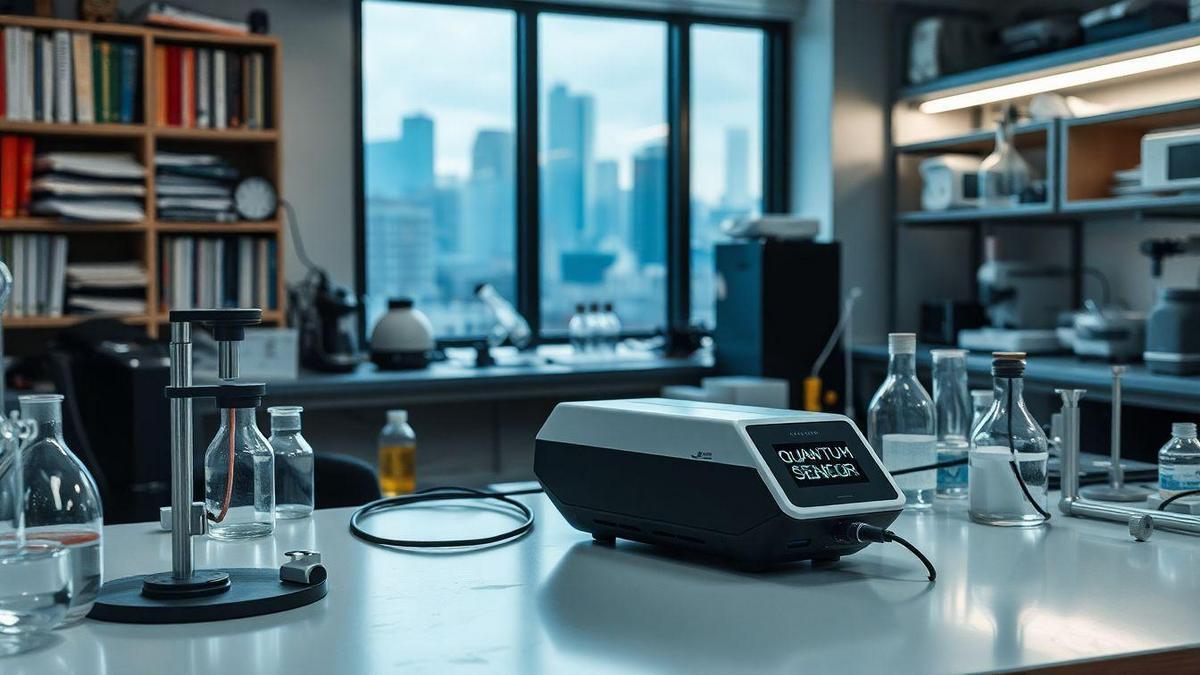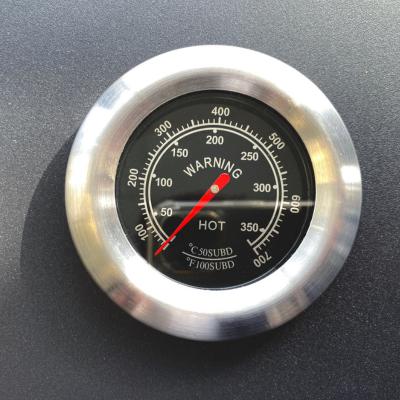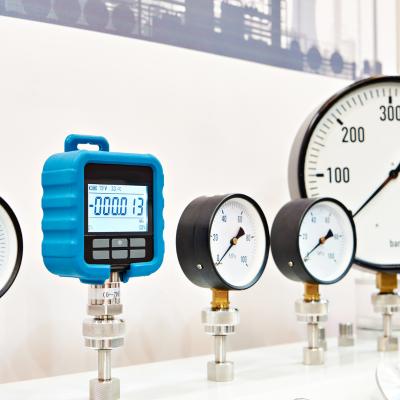Anúncios
Air quality monitoring and trace pollutant detection are essential issues for public health and the environment. Quantum sensors, which utilize the principles of quantum mechanics, are revolutionizing this field with their unprecedented accuracy. These sensors offer new possibilities to detect small concentrations of pollutants, often invisible to traditional methods.
In addition to their exceptional sensitivity, quantum sensors have the ability to provide real-time data, allowing for a quick response to environmental changes. Their operation in extreme conditions and high reliability expand the options for monitoring in various locations, from urban areas to remote industrial regions. As this technology advances, quantum sensors are becoming increasingly valuable tools for environmental preservation and public health.
Anúncios

How Quantum Sensors Detect Trace Pollutant Concentrations
Quantum sensors use the principles of quantum mechanics to measure physical quantities with unprecedented accuracy. In the context of trace pollutant concentration detection, these sensors exploit the unique properties of quantum states, such as superposition and entanglement, to enhance sensitivity and precision. The core mechanism involves the interaction of quantum systems with external fields or particles, allowing the detection of tiny changes in environmental conditions that indicate the presence of pollutants. By harnessing quantum phenomena, these sensors can achieve sensitivity levels that surpass traditional detection methods, making them invaluable tools for environmental monitoring.
The operation of quantum sensors begins with preparing a quantum state sensitive to the presence of specific pollutants. For example, a sensor may use atoms or molecules that resonate at particular frequencies when exposed to certain chemical compounds. When pollutants come into proximity with the sensor, they alter the quantum state of the system, leading to measurable changes in the sensor’s output. This interaction can be quantified to determine the pollutant’s concentration, providing real-time data on air quality and environmental health. The ability to detect trace amounts of pollutants, often at parts per billion or even parts per trillion levels, is a game changer for environmental science and public health.
Additionally, quantum sensors can operate in a variety of environments, including extreme conditions where traditional sensors may fail. Their robustness and reliability make them suitable for long-term monitoring in diverse settings, from urban areas to remote industrial locations. The integration of quantum sensors into environmental monitoring systems enhances the ability to track pollution sources, assess air quality, and implement rapid interventions to mitigate environmental impacts. As research and development in quantum technology continue to progress, the potential applications of these sensors in pollution detection are expanding, promising a future where air quality can be monitored with unparalleled accuracy.
Moreover, quantum sensors offer the advantage of real-time monitoring capabilities. This means that changes in pollutant concentrations can be detected almost instantaneously, enabling a swift response to environmental hazards. The data generated by quantum sensors can be used to inform policy decisions, guide regulatory measures, and raise public awareness about air quality issues. As the global focus on environmental sustainability intensifies, the role of quantum sensors in detecting trace pollutant concentrations is likely to become increasingly prominent, providing critical insights into the health of our planet and its inhabitants.
Advantages of Quantum Sensors in Environmental Monitoring

The advantages of quantum sensors in environmental monitoring are numerous, especially when it comes to detecting trace pollutant concentrations. One of the most significant benefits is their unmatched sensitivity, allowing for the detection of extremely low levels of pollutants that traditional sensors may miss. This capability is crucial for identifying harmful substances in the environment, especially in urban areas where pollution levels can fluctuate rapidly. By providing accurate measurements of trace pollutants, quantum sensors contribute to a better understanding of air quality and its impact on public health.
Another advantage of quantum sensors is their ability to operate in a wide range of environmental conditions. Unlike conventional sensors that may be limited by temperature, humidity, or other factors, quantum sensors can maintain their performance in challenging conditions. This versatility makes them suitable for deployment in various locations, from densely populated cities to remote industrial sites. The ability to monitor air quality in diverse environments allows researchers and policymakers to collect comprehensive data on pollution sources and trends, facilitating more effective environmental management strategies.
Additionally, quantum sensors enable the collection and analysis of real-time data, which is crucial for quick responses to pollution events. The instant feedback provided by these sensors allows for immediate actions to mitigate the effects of pollution, such as issuing health warnings or implementing emergency response measures. Real-time monitoring also supports ongoing research efforts to understand air quality dynamics and pollutant dispersion, leading to more informed decisions about environmental policies and regulations.
Finally, the integration of quantum sensors with advanced data analysis techniques and machine learning enhances their effectiveness in environmental monitoring. By analyzing the data collected by quantum sensors, researchers can identify patterns and correlations that may not be immediately apparent. This data-driven approach allows for more precise modeling of pollution dynamics and better predictions of future air quality scenarios. As a result, quantum sensors not only improve our ability to detect trace pollutants but also contribute to a more comprehensive understanding of environmental health.
How Quantum Sensors Are Revolutionizing Pollution Detection and Air Quality Research
Quantum sensors are revolutionizing the field of pollution detection and air quality research through their advanced capabilities. One of the main ways they improve pollution detection is by offering real-time pollutant tracking capabilities. This means that changes in pollutant concentrations can be continuously monitored, allowing for the immediate identification of pollution spikes or trends. This timely data is crucial for addressing environmental health concerns and implementing effective regulatory measures.
Another significant advantage of quantum sensors is their high sensitivity to trace pollutants. Traditional sensors often struggle to detect low concentrations of harmful substances, while quantum sensors can identify pollutants at incredibly low levels, sometimes in the parts-per-trillion range. This level of sensitivity is essential for detecting hazardous materials that may pose serious risks to human health and the environment, enabling proactive measures to mitigate exposure.
Quantum sensors also employ advanced detection methods that leverage the principles of quantum mechanics. These methods allow for precise measurement of physical properties related to pollutants, such as their molecular vibrations or electronic transitions. By utilizing these sophisticated techniques, quantum sensors can provide highly accurate and reliable measurements, reducing the likelihood of false positives or negatives that may occur with conventional sensors.
The integration of quantum sensors with nanosensors further enhances their accuracy and performance. Nanosensors, which are typically smaller and more sensitive than traditional sensors, can be combined with quantum sensors to boost their detection capabilities. This synergy allows for the development of highly sensitive and compact detection devices that can be deployed in various environmental monitoring scenarios, from urban air quality assessments to industrial emissions monitoring.
The applications of quantum sensors in environmental monitoring are diverse and impactful. They can be used to monitor air quality in urban environments, track emissions from industrial sources, and assess the effectiveness of pollution control measures. Additionally, these sensors can be employed in research environments to study the dynamics of pollutant dispersion and accumulation. Their ability to provide real-time data and high sensitivity makes them invaluable tools for understanding and addressing environmental pollution.
Finally, quantum sensors significantly contribute to the analysis of pollutant concentrations. By providing accurate measurements of pollutant levels, these sensors facilitate the identification of pollution sources and trends over time. This information is critical for informing policy decisions, guiding regulatory frameworks, and raising public awareness about air quality issues. As the world increasingly prioritizes environmental sustainability, the role of quantum sensors in detecting trace pollutant concentrations will continue to grow, offering new opportunities to improve air quality and public health.
Did You Know Quantum Sensors Detect Trace Pollutant Concentrations?
Quantum sensors represent a remarkable advancement in the field of environmental monitoring, especially in detecting trace pollutant concentrations. Their unique capabilities, such as high sensitivity, real-time tracking, and advanced detection methods, make them essential tools for understanding and managing air quality. As research and technology continue to evolve, the potential applications of quantum sensors will expand, offering new insights into environmental health.
The future of pollution detection and environmental monitoring looks promising with the integration of quantum sensors. These innovative devices not only enhance our ability to measure and analyze pollutant concentrations but also contribute to the development of effective strategies to protect public health and the environment. As we continue to explore the possibilities of quantum technology, the impact of these sensors on our understanding of air quality will undoubtedly be profound.
Frequently Asked Questions

What are quantum sensors that detect pollutant concentrations?
Quantum sensors detect small amounts of pollutants. They use principles of quantum physics, making them highly sensitive.
How do quantum sensors work in pollutant detection?
They measure changes in magnetic or electric fields. These changes indicate the presence of pollutants. That’s how they work.
Where can I use quantum sensors to detect pollutants?
You can use them in industrial environments, cities, and natural areas. They help monitor air quality, which is crucial for health.
Are quantum sensors expensive?
Costs can vary. They may be more expensive than conventional sensors. But the accuracy makes them worth the investment.
What is the advantage of quantum sensors over other sensors?
They are more sensitive and precise. They detect pollutant concentrations at low levels, helping act quickly to protect the environment.
